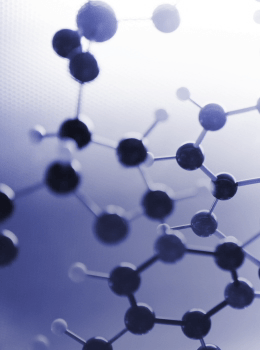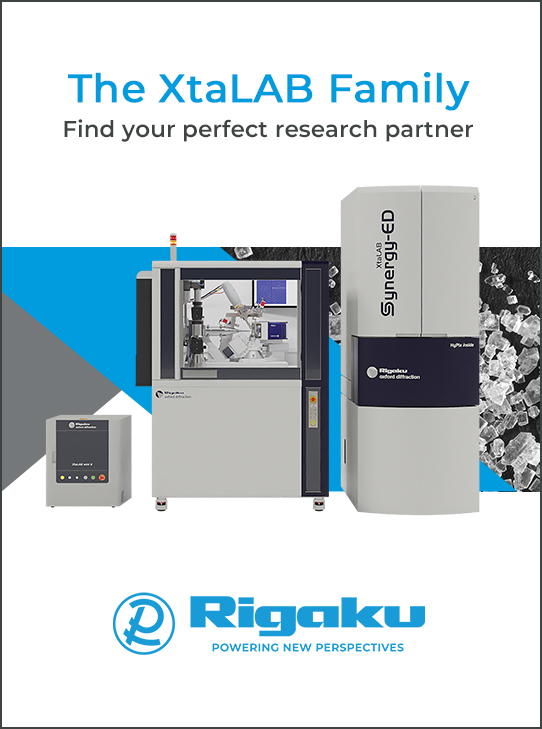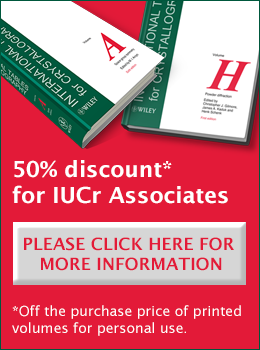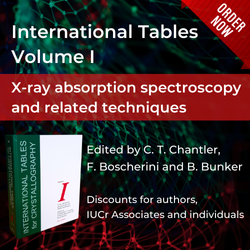
Meeting report (IUCr supported)
11th Zürich School of Crystallography: Bring Your Own Crystals
![Thumbnail [Thumbnail]](https://www.iucr.org/__data/assets/image/0008/158903/ZSC-thumbnail.png)
The 11th Zürich School of Crystallography, 17–29 June 2024, was held as usual in the Department of Chemistry at the University of Zürich (UZH). The 10 male and 10 female participants comprised one MSc and 13 PhD students, three postdocs, two research staff and one person from a pharmaceutical company. They came from 17 countries: Brazil, China (Hong Kong), Croatia, Denmark, France, Germany, Italy, Japan, Norway, Saudia Arabia, Singapore, Slovenia, Sweden, Switzerland, Tunisia, USA and Zimbabwe. The cohort included 11 full-time tutors and two local guest lecturers.
All of the participants were highly dedicated and worked tirelessly for the entire School, despite its intensity. While most participants were young scientists, the group this time included two upcoming service crystallographers. The levels of experience of the participants ranged from minimal to moderate. During casual interactions, we gained the clear impression that everyone felt happy that they had learnt something new and were more confident about tackling their own structure determinations.
Participants receive very personalised mentoring with our popular 2:1 student–tutor ratio and are additionally motivated by the "bring-your-own-crystals" concept of the School. They become well-equipped to determine their own structures when they return home and to recognise when they need to seek advice for a challenging problem. One participant was thrilled that the information on growing crystals, sent out before the School, had yielded instant results for the materials she had hitherto been struggling to crystallise. Many new friendships formed and it was pleasing to see everyone interacting with each other.
![[Fig. 1]](https://www.iucr.org/__data/assets/image/0009/158904/Fig.-1.jpg) The aim of the School is to introduce the participants to the theory and practice of X-ray diffraction and single-crystal small-molecule structure determination. We cover all stages from crystal growth through to interpretation of the results and preparing material for publication. We deliberately limit the focus to single-crystal small-molecule crystallography so as to be thorough. The daily schedule combines a balance of lectures, tutorial exercises and practical work, including hands-on experience mounting crystals and collecting data from samples the participants provide. We use five diffractometers, which include dual-source Rigaku Synergy and Supernova instruments, as well as a Bruker Venture D8 diffractometer.
The aim of the School is to introduce the participants to the theory and practice of X-ray diffraction and single-crystal small-molecule structure determination. We cover all stages from crystal growth through to interpretation of the results and preparing material for publication. We deliberately limit the focus to single-crystal small-molecule crystallography so as to be thorough. The daily schedule combines a balance of lectures, tutorial exercises and practical work, including hands-on experience mounting crystals and collecting data from samples the participants provide. We use five diffractometers, which include dual-source Rigaku Synergy and Supernova instruments, as well as a Bruker Venture D8 diffractometer.
![[Fig. 2]](https://www.iucr.org/__data/assets/image/0010/158905/Fig.-2.jpg) The concepts of symmetry are consistently a challenging theme, which appears in part to be related to the visualisation of objects and symmetry transformations in 3D. Online tools are useful, but are not truly 3D. In small tutorial groups, we use wooden and plastic models of solid shapes and molecules representing all point groups. The ability to hold and tumble such models helps the participants acquire the concepts more easily. It was also great fun watching people cutting their apples in the "La coupe du roi" exercise to illustrate stereochemistry and chirality, a demonstration initially presented during our Schools by Howard Flack.
The concepts of symmetry are consistently a challenging theme, which appears in part to be related to the visualisation of objects and symmetry transformations in 3D. Online tools are useful, but are not truly 3D. In small tutorial groups, we use wooden and plastic models of solid shapes and molecules representing all point groups. The ability to hold and tumble such models helps the participants acquire the concepts more easily. It was also great fun watching people cutting their apples in the "La coupe du roi" exercise to illustrate stereochemistry and chirality, a demonstration initially presented during our Schools by Howard Flack.
An innovation introduced this time by Lukáš Palatinus was the use of short quizzes via the Kahoot platform. A multiple-choice question is beamed on the front screen and participants have a limited time (e.g. 30 seconds) to answer the question using their phones. The results are then displayed on the front screen, which allows quick discussion of the answers and clarification of any misunderstandings. Points are awarded for correct answers in the fastest time. The quizzes generated excitement and enthusiasm, while providing instant feedback and reinforcement of key points from the preceding lecture material.
![[Fig. 3]](https://www.iucr.org/__data/assets/image/0011/158906/Fig.-3.jpg)
During the practical component, the participants work on at least four example structures presenting varying degrees of difficulty. This facilitates learning how to use the software effectively and to handle frequently encountered challenges, such as entities lying on or across symmetry elements, disorder, absolute structure and the analysis of weak interactions. Participants learn about the actual procedures going on when various buttons and settings are selected in the software and to interpret whether appropriate results are obtained. Each participant then works on the data set collected from their own crystalline sample. We used Olex2 once again, alongside the SHELX programs, PLATON and other readily available software. The extensive range of tools and graphics incorporated into Olex2, from routine tasks like atom-naming to modelling disorder, plus a range of quality indicators and statistics, allows us to demonstrate structure solution, refinement and results evaluation in a didactically beneficial way.
Most days concluded with a short discussion where participants can express their feelings about their experience that day. On the final morning, the participants sat a two-hour written exam either to obtain ECTS credit points or to self-test their knowledge. After the exam, the final day included some advanced topics and presentations designed to give the participants a taste of other possibilities, such as Hirshfeld atom refinements and electron diffraction.
The farewell banquet is an emotional time for everyone after making so many new friends. Each participant received a certificate, Swiss chocolate and a copy of The Non-Ambient Guide donated by Anton Paar. The two participants with the best exam results received additional prizes: an insulated UZH-branded coffee mug (first prize) and the old but still useful book Crystal Structure Refinement, A Crystallographer's Guide to SHELXL by Peter Müller (first and second prizes).
![[Fig. 4]](https://www.iucr.org/__data/assets/image/0003/158907/Fig.-4.png)
The personal impressions of two participants are given below. We anticipate organising the next School in June 2026.
We gratefully acknowledge the generosity of our sponsors and supporters: Department of Chemistry of the University of Zürich, Swiss Society for Crystallography, European Crystallographic Association, IUCr, Cambridge Crystallographic Data Centre, Rigaku Oxford Diffraction, Dectris Ltd, Bruker AXS, Anton Paar and Quantum Detectors.
Impressions from participants
Voon Kunn Ng (National University of Singapore)
![[Fig. 5]](https://www.iucr.org/__data/assets/image/0004/158908/Fig.-5.jpg) My experience during the Zürich School of Crystallography 2024 was a truly rewarding one. Not only did I gain theoretical and practical knowledge on crystallography but also the interaction with tutors and participants introduced me to various cultures, forged friendships and created many fond memories.
My experience during the Zürich School of Crystallography 2024 was a truly rewarding one. Not only did I gain theoretical and practical knowledge on crystallography but also the interaction with tutors and participants introduced me to various cultures, forged friendships and created many fond memories.
The School was very well-organised, and students were very well taken care of. Even before the School started, we received the lecture notes and many reading materials to prepare us for the School. Detailed instructions on downloading the software were also provided in advance, giving us ample time to resolve any software issues. Tutors even made time to solve any software issues on the first day, ensuring that all of us were well-equipped when classes started the next day.
While instrument operation and data processing are not new to me, I was curious to understand what the significance behind every step was. In this aspect, the School did not disappoint and provided answers to my questions. There was still so much that I could learn despite having solved many structures myself. Small group tutorials were especially helpful to visualize space groups and symmetry operations, and tutors were very approachable to answer any queries that we had. I could feel the passion and enthusiasm that the tutors had for crystallography as they were teaching and explaining, making it extremely pleasant to learn from them.
Classes were highly intensive, and coffee breaks to take a breather were very much looked forward to. The free day in the middle of the School also provided some rest time and an opportunity to explore the city. Even though ten days of crystallography were exhausting, knowing how much effort the tutors put in made me determined to absorb the knowledge that they were passing on.
On the last day of classes, all students sat for a 2-hour examination to test our knowledge gained during the School. As someone who last sat for an exam many years ago, it was nerve wracking, yet I was eager to know how much information I had acquired in the past ten days.
To sum it up, the School has taught me to greatly appreciate crystallography. It was an engaging and enriching experience, getting to know people in the field and learning so much from them. I would like to thank the organisers, Professor Tony Linden and Professor Hans-Beat Bürgi, for the opportunity to participate in the School, and making sure that we were always getting the best out of it.
Andrea Vitale (Bologna, Italy)
![[Fig. 6]](https://www.iucr.org/__data/assets/image/0005/158909/Fig.-6.jpg) During the second half of June, from the 17th to the 29th, I had the opportunity to spend time with 19 other young researchers from all over the world in Zürich, Switzerland, for the Zürich School of Crystallography 2024.
During the second half of June, from the 17th to the 29th, I had the opportunity to spend time with 19 other young researchers from all over the world in Zürich, Switzerland, for the Zürich School of Crystallography 2024.
It was a beautiful and formative experience, offering one of the most comprehensive understandings of crystallography and its related fields, both in practical applications and research.
Professors Anthony Linden and Hans-Beat Bürgi organized and directed the school in an exceptional manner. From the incredible selection of well-prepared tutors, who guided us through this intense and educational journey, to the carefully chosen hotel and restaurants that facilitated socializing and provided opportunities to meet and converse with professors and fellow researchers sharing the same passion. These interactions were inspiring, offering various perspectives and topics in this field.
For me, the school greatly enhanced my understanding of the foundational aspects of my research, particularly concerning the theory behind structure solution and refinement models.
Every lecture was filled with information, tips and tricks that crystallographers can use in their daily work. All this magnitude of knowledge was provided in both paper and .pdf formats, which will be very useful for continuing my studies and supporting my research projects. Additionally, we had the chance to collect diffraction intensities from our own crystals using the most advanced diffractometers and detectors for single-crystal structure determination. This hands-on experience allowed me to learn more about the instruments and their software, and it gave me the opportunity to solve and refine my own synthesized structure, manage its disorder and study its packing within the unit cell.
In conclusion, the Zürich School of Crystallography has been the highlight of my first year in my PhD program. It has already significantly contributed to my future career, research and experiments, and it provided the chance to meet incredible people whom I look forward to encountering again in the future.
![[Fig. 7]](https://www.iucr.org/__data/assets/image/0006/158910/Fig.-7.png)
Copyright © - All Rights Reserved - International Union of Crystallography








